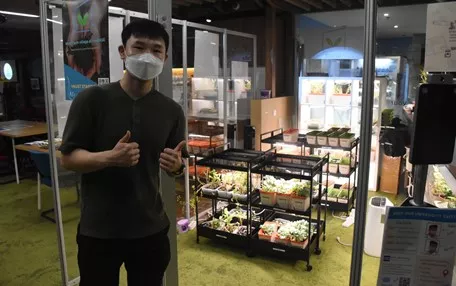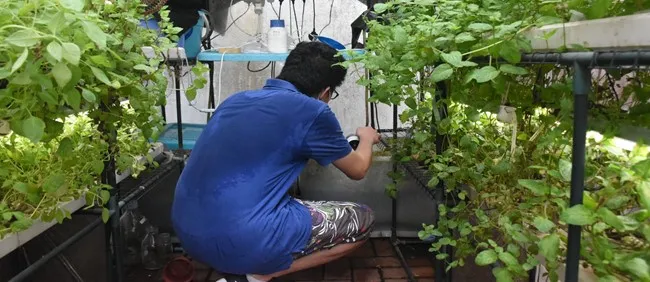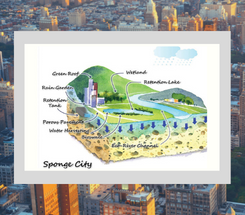Urban Farming
An introduction to urban farming
Following the invention of the internet humanity has never been so connected, this sharing of knowledge globally has led to levels of development unimaginable with no signs of slowing down anytime soon, with the UN even projecting that 68% of the global population will be living in urban areas by 20501. It is these levels of growth paired with limited space leading the drive for innovative new sustainable technological solutions to many of the problems we face including food scarcity, one of which being Urban Farming. When someone says urban farming what do you usually think of? Someone growing tomatoes in their kitchen? Or perhaps a failing industry that's going nowhere? Well like it or not if recent investment trends are an indicator of anything it's that urban farming is here to stay.
While many may initially think that urban farming has only been a recent innovation, its origins stem as far back as 3500 BC with the intention of cultivating land under the protection of walls with water brought in with aqueducts. Modern day urban farming has evolved far beyond that with the focus instead being placed on land efficiency. The term Urban Farming is often an extremely broad term referring to the cultivation and processing of food in urban areas. There are a plethora of different forms of urban farming that have developed as a result of both maximizing land efficiency and self-sufficiency.
Aquaponics
Aquaponics is a form of urban farming that involves a combination of aquaculture (fostering aquatic animals) and hydroponics (growing plants without soil). The main concept behind Aquaponics is to utilize the symbiotic relationship between the two elements in which the plants feed off the aquatic animal's waste which provides nutrients by converting Ammonia into Nitrates essential for crop growth. In return the crops clean the water that is later returned to the fish for the cycle to be repeated again.
Over time the process of Aquaponics has been improved to be even more self-sufficient by incorporating solar panels to fuel the irrigation system that is used to pump the water through the pipes. The development of aquaponics has seen a surge of development in urban farming and sustainable crop production and water consumption in general as its systems offer a truly self-sufficient process with minimal human input. Aquaponics is often used to best effect when growing leafy crops such as chives and lettuce due to the plants increased capacity to store water. But in recent years it has branched out to various crops ranging from tomatoes to melons, proving the versatility and feasibility of Aquaponics as a large-scale food production source in the long term that is suited for the urban jungles. Nowadays Aquaponics is commonly paired with vertical farming when used in an urban farming context to get the best of both worlds, combining the self-sufficiency from Aquaponics with the land efficiency of vertical farming that can be implemented on a global scale.
Urban Farming in Hong Kong and HKUST
Despite being a thriving international financial hub Hong Kong has always fallen short when it comes to one thing, food security. 90% of HK’s net food supply is imported despite 300 conventional industrial farms they only produce 36.5 tons of organic produce, less than 1% of what the local population uses finally. While more advanced forms of urban farming namely vertical farming and aquaponics exist they are still rare and few between. Instead HK has adopted more communal and rooftop farms that have seen some government initiative backings in the form of grants and plots of land to be used.2
Leading the way, HKUST has also developed several forms of urban farming on their own which are innovative and are designed for the urban jungle that is HK. HKUST also boasts their own working aquaponics farm system funded under the Sustainable Smart Campus initiative which aims to demonstrate that green business as an economic model is viable whilst promoting urban farming as a sustainable food source both on campus and locally within HK3. Under the Sustainable Smart Campus program HKUST has also funded another new form of urban farming, a moveable vertical garden constructed from sustainable and recycled materials that also incorporates aquaponic farming. The project aims to provide a sustainable and environmentally friendly alternative for high yields of crops through the use of a hydroponic and aquaponic vertical farm.
Green business as an economic model is viable whilst promoting urban farming as a sustainable food source both on campus and locally within HK.
However, while technology has enabled us to introduce these farms in urban areas they still require a lot of human effort to maintain. As whilst crops will not need to be watered they still require human labour to plant and harvest which can be quite tedious at times. Professor Li Ning, project lead of HKUST’s Aquaponics team experienced first hand the need of human maintenance in aquaponics farms in order to be fully self-sufficient, spending up to 3 days a week personally maintaining and harvesting crops.

Founder and CEO of Muto world SSC project and HKUST student William
Muto World was another urban farming SSC project that started out as a hydroponic farms project at HKUST’s entrepreneurship center ‘The base’ that has delved into the realm of fintech and blockchain to create a system that allows users to buy and sell crops grown in urban farms across the world. Highlighting the versatility and potential of urban farming not only in Hong Kong but globally as well.
How you can get involved
Well right about now you might be thinking how can I even make a difference? I’m just your average Joe working a regular 9-5 job trying to make ends meet every month, how can I support something like urban farming at the same time? Whilst it's true that you as an individual will unlikely be able to make a difference in the grand scheme of things, it doesn’t mean you shouldn’t make an effort to support it. And by that I don’t mean buying a plot of land and starting your own urban farm. Try growing out a plot of land at one of HK’s numerous rooftop gardens, or supporting your grocer with locally grown produce which is the next best thing. If there's one thing I want you to take away from this article is that never underestimate the power you possess as an individual, and don’t be afraid to make changes in your life even if it may not be the most orthodox at the moment.
2Miigle. “The Rise of Urban Farming.” Medium, Medium, 25 May 2019, https://medium.com/@Miigle/the-rise-of-urban-farming-cf894db51784. Research and Markets. “Urban Farming Market - Forecast (2020 - 2025) - Research and Markets.” Research and Markets - Market Research
3SSC, HKUST, director. A Sustainable Vertical Garden @HKUST. YouTube, YouTube, 8 Apr. 2021, https://www.youtube.com/watch?v=YnuZO428Oyo&t=71s&ab_channel=SustainableSmartCampusasaLivingLabatHKUST.




